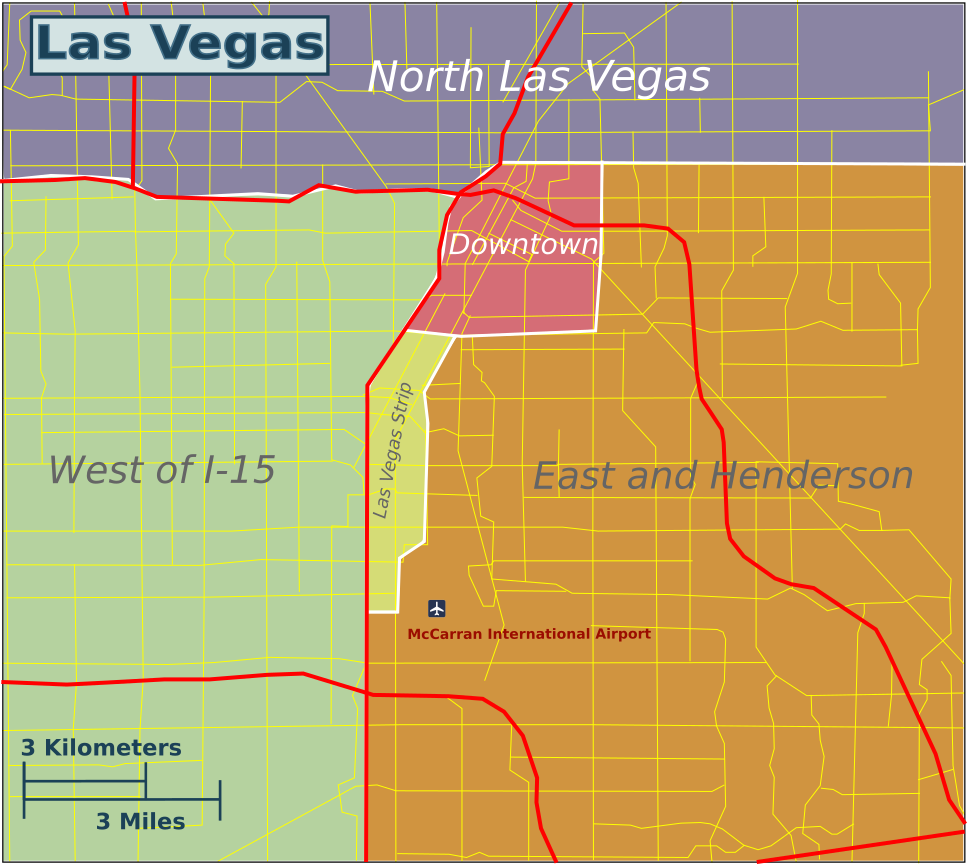Which Area Should I Pick?
Las Vegas is a city of incredible diversity, with each area offering its own unique personality and attractions, making it essential to choose the right location to match your preferences and travel goals. Whether you’re drawn to the iconic Strip with its dazzling lights, renowned entertainment, and luxury resorts, or the historic charm and lively atmosphere of Downtown Las Vegas, your choice of where to stay can greatly shape your experience. For those seeking a more relaxed or suburban vibe, areas like Summerlin and Henderson provide a peaceful escape with access to stunning outdoor spaces, upscale dining, and family-friendly amenities. Meanwhile, North Las Vegas and Off-Strip locations offer a mix of affordability and convenience, ideal for those who want a different perspective on the city while staying close to the action.
On this page, we provide a detailed overview of the major areas in Las Vegas—covering the Strip, Downtown, Off-Strip, North Las Vegas, Summerlin, and Henderson. We outline the unique aspects of each neighborhood and explore the pros and cons to help you make the best choice for your stay. Whether you’re planning a high-energy trip filled with nightlife and entertainment, a laid-back vacation focused on relaxation, or an outdoor adventure with easy access to nearby natural wonders, this guide will ensure you select the perfect base for your visit. By understanding what each area has to offer, you can create a personalized Las Vegas experience that aligns with your interests, budget, and travel plans.
The Strip
The Strip is the heart of Las Vegas, renowned for its iconic resorts, world-class entertainment, and endless dining options.
Pros:
Unparalleled Entertainment: The Strip offers access to some of the world’s best shows, concerts, and nightlife.
Convenience: Many major attractions, such as Bellagio’s fountains and the Eiffel Tower replica at Paris Las Vegas, are within walking distance.
Luxury Accommodations: The Strip boasts a wide range of hotels, from ultra-luxurious (e.g., The Venetian, ARIA) to budget-friendly options.
Dining Variety: A diverse array of restaurants, from Michelin-starred establishments to casual eateries, is at your fingertips.
Cons:
Cost: Hotels, dining, and activities on the Strip tend to be more expensive than in other areas.
Crowds: The Strip is bustling year-round, which may not appeal to those seeking a quieter vacation.
Traffic: Parking and navigating the Strip by car can be challenging due to heavy congestion.
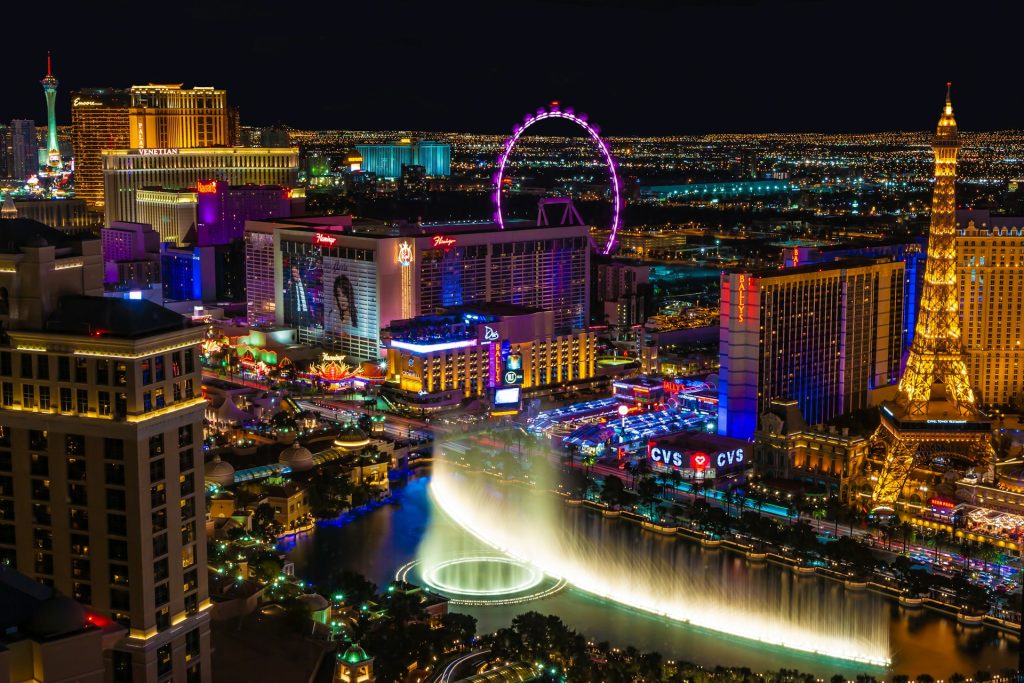
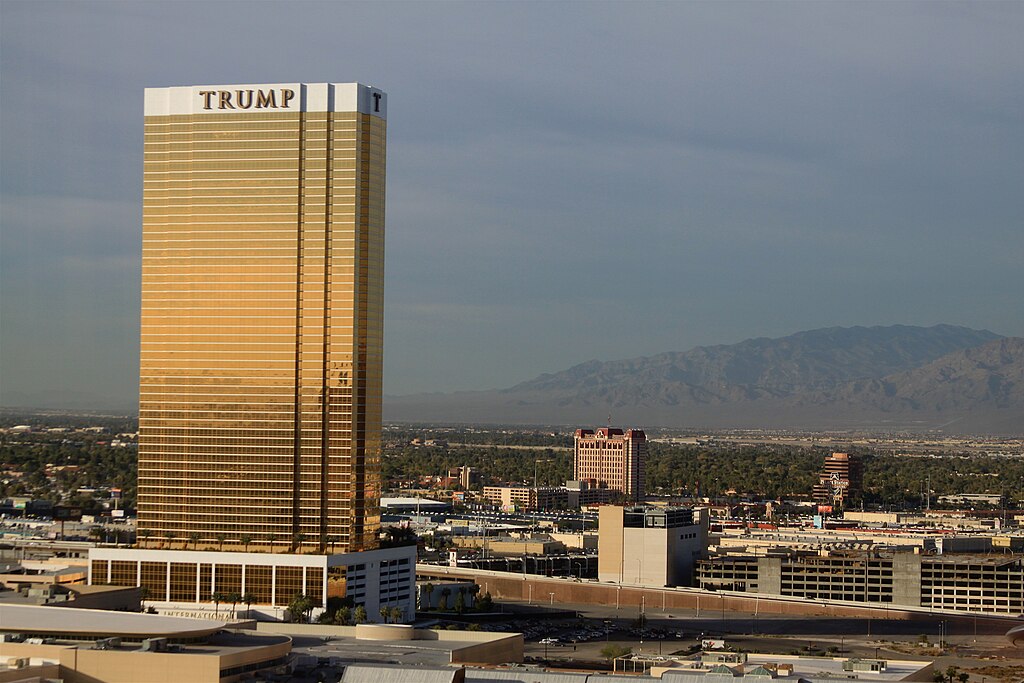
Off-Strip
The Off-Strip area includes hotels and resorts located within a short distance of the main Strip.
Pros:
Affordability: Off-Strip hotels generally offer lower rates while still providing high-quality amenities.
Relaxed Atmosphere: These areas tend to be quieter, appealing to those who want a break from the hustle and bustle.
Proximity to the Strip: Staying Off-Strip often means a short drive or shuttle ride to the Strip, combining convenience with tranquility.
Unique Resorts: Properties like the Palms and Virgin Hotels offer distinct vibes and excellent dining and entertainment options.
Cons:
Limited Attractions: Off-Strip areas lack the density of entertainment and landmarks found on the Strip.
Transportation Needed: Guests may need to rely on taxis, rideshares, or shuttles to access the Strip and other key locations.
Downtown / Fremont Street
Downtown Las Vegas, particularly Fremont Street, offers a historic and vibrant alternative to the Strip.
Pros:
Affordable Hotels: Downtown accommodations, such as the Golden Nugget or Circa, often come at a lower price point than the Strip.
Unique Atmosphere: The Fremont Street Experience offers a blend of old-school Vegas charm and modern entertainment.
Compact Layout: Downtown is walkable, making it easy to explore casinos, restaurants, and attractions.
Cultural Offerings: Beyond the casinos, Downtown is home to the Arts District, museums, and local eateries.
Cons:
Fewer Luxury Options: While Downtown has some upscale hotels, it lacks the sheer opulence of the Strip’s top-tier resorts.
Noise and Crowds: Fremont Street can be noisy and crowded, especially during nightly light shows and events.
Distance from the Strip: Travelers looking to visit the Strip will face a longer commute compared to Off-Strip areas.
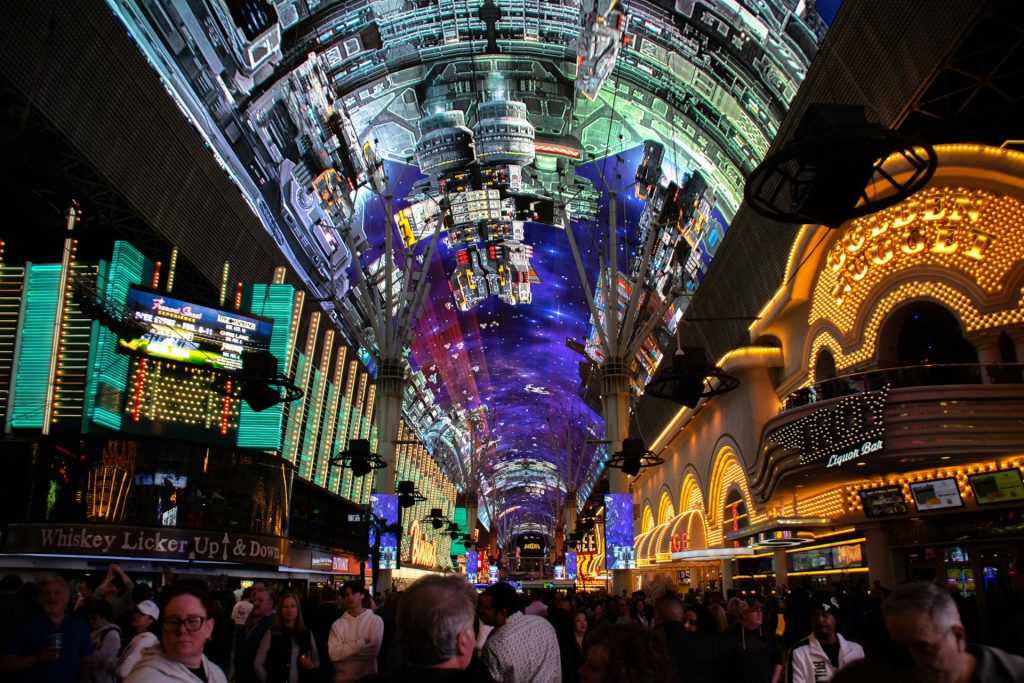
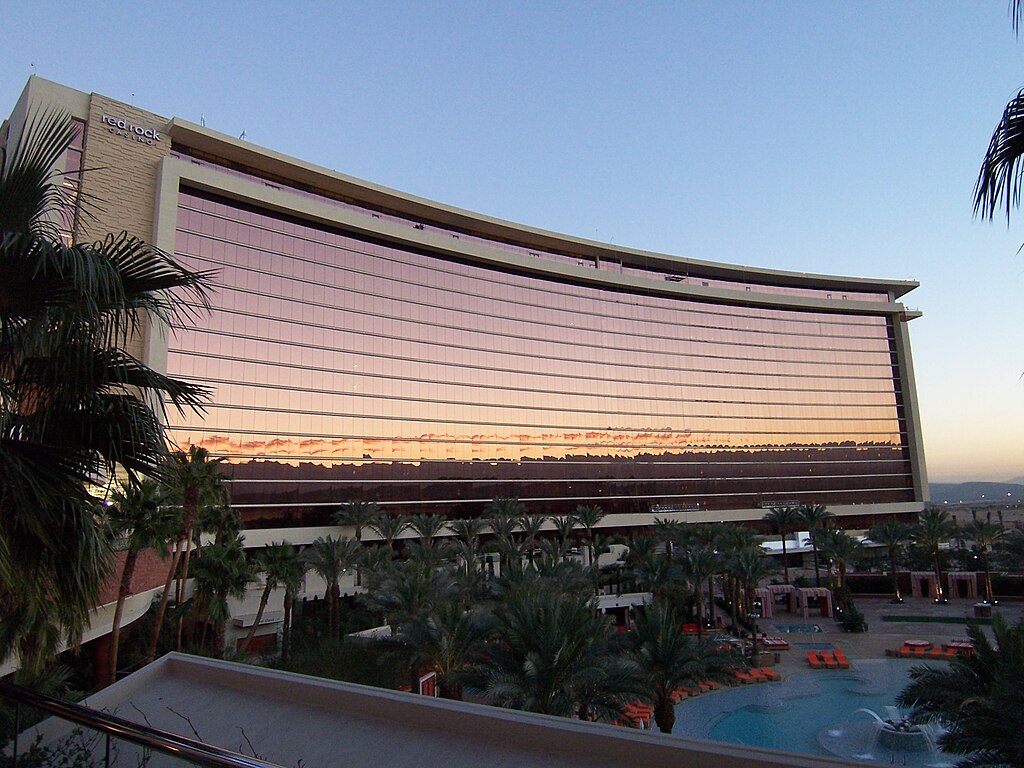
Greater Las Vegas (Summerlin, Spring Valley, Henderson, North Las Vegas)
The Greater Las Vegas area encompasses neighborhoods outside the city’s central tourist zones, offering a more local and suburban experience.
Pros:
Peace and Quiet: Areas like Summerlin and Henderson provide a relaxing retreat from the city’s high-energy core.
Family-Friendly: These neighborhoods often feature family-oriented activities, parks, and spacious accommodations like vacation rentals.
Scenic Beauty: Proximity to Red Rock Canyon (Summerlin) and Lake Las Vegas (Henderson) offers outdoor enthusiasts a range of recreational opportunities.
Affordability: Hotels and rentals in these areas are often more budget-friendly compared to central Las Vegas.
Cons:
Distance from Attractions: Staying in Greater Las Vegas requires a car or ride service to reach the Strip or Downtown.
Limited Nightlife: These areas are quieter and lack the nightlife and entertainment options of the Strip or Fremont Street.
Fewer Hotel Choices: Compared to the Strip, the selection of hotels and resorts is more limited.

